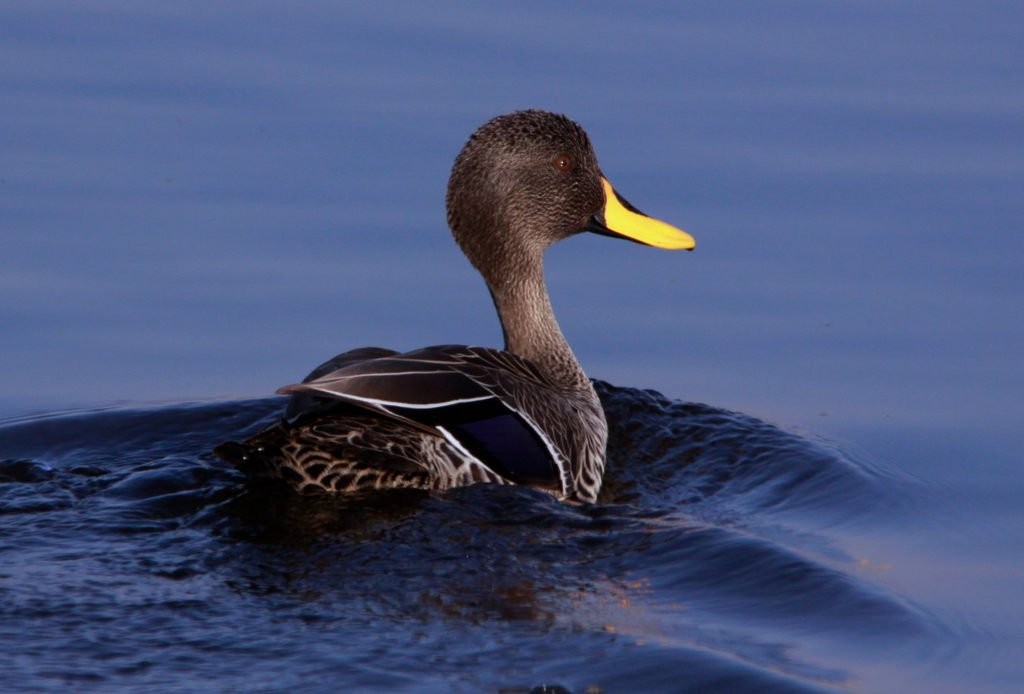Yellow-billed Duck
A species of Anas Scientific name : Anas undulata Genus : Anas
Yellow-billed Duck, A species of Anas
Botanical name: Anas undulata
Genus: Anas
Content
Description General Info
Description
The yellow-billed duck (Anas undulata) is a 51–58 cm long dabbling duck which is an abundant resident breeder in southern and eastern Africa. This duck is not migratory, but will wander in the dry season to find suitable waters. It is highly gregarious outside the breeding season and forms large flocks. These are mallard-sized mainly grey ducks with a darker head and bright yellow bill. The wings are whitish below, and from above show a white-bordered green speculum. Sexes are similar, and juveniles are slightly duller than adults. The north-eastern race is darker and has a brighter bill and blue speculum. It is a bird of freshwater habitats in fairly open country and feeds by dabbling for plant food mainly in the evening or at night. It nests on the ground in dense vegetation near water. Rarely found in suburban areas, in close proximity to golf courses, parks and lakes or dams. The clutch numbers between six and twelve eggs. The male has a teal-like whistle, whereas the female has a mallard-like quack. There are two subspecies of the yellow-billed duck: A. undulata rueppelli (northern yellow-billed duck) and A. undulata undulata (southern yellow-billed duck). The yellow-billed duck is one of the species to which the Agreement on the Conservation of African-Eurasian Migratory Waterbirds (AEWA) applies. The southern nominate subspecies is declining due to competition and hybridization with feral mallards (Rhymer 2006). 
Size
63 cm
Life Expectancy
20 years
Nest Placement
Ground
Feeding Habits
Yellow-billed Duck's diet comprises seeds, roots, and leaves of aquatic and terrestrial plants alongside animal matter such as insects and their larvae, molluscs, and crustaceans. They forage by dabbling, upending, diving in shallow waters, grazing on land, and occasionally visit feedlots for undigested seeds. Their feeding occurs both day and night, sometimes in large flocks during non-breeding seasons.
Habitat
The habitat of yellow-billed Duck predominantly includes freshwater environments such as lakes, reservoirs, and swamps, characterized by rich, marginal vegetation. Yellow-billed Duck is also found in flooded fields, marshes, and slow-flowing rivers with pools, capitalizing on these habitats for breeding purposes. Additionally, yellow-billed Duck occupies brackish coastal lagoons, saltpans, and estuaries, showcasing its adaptability to various wetland ecosystems.
Dite type
Omnivorous
General Info
Feeding Habits
Bird food type
Species Status
Not globally threatened.
